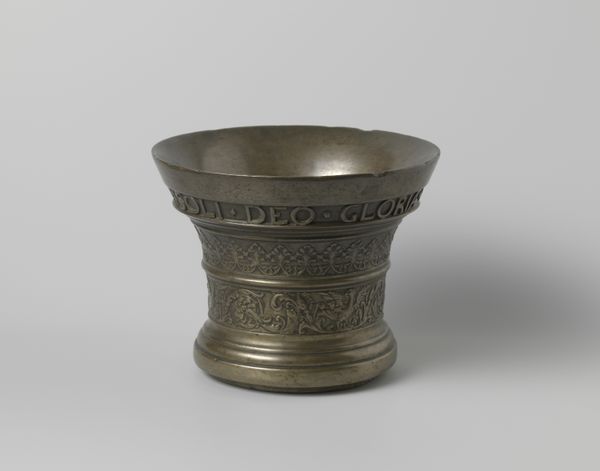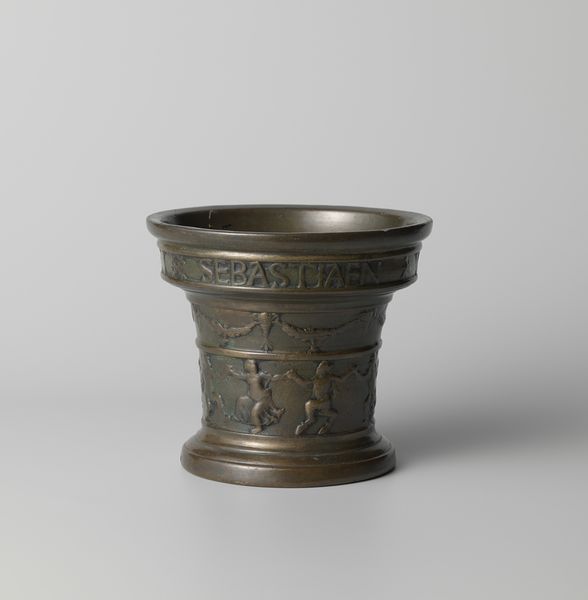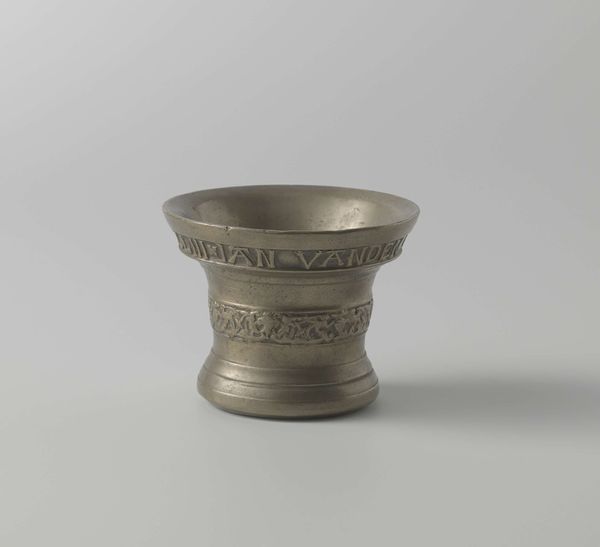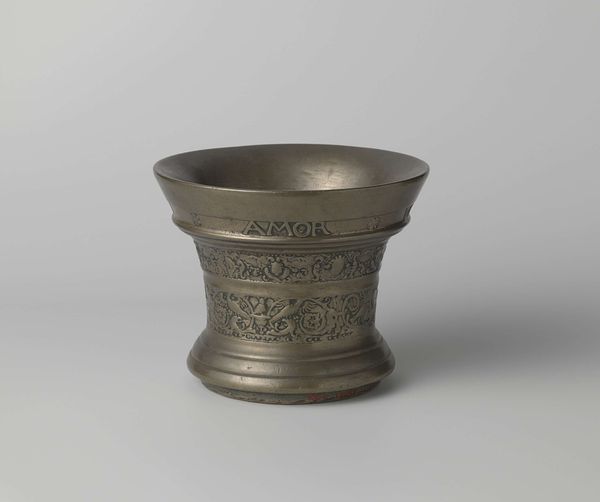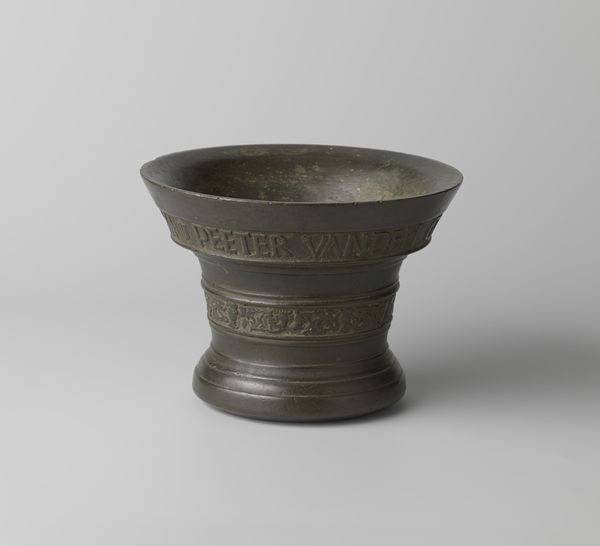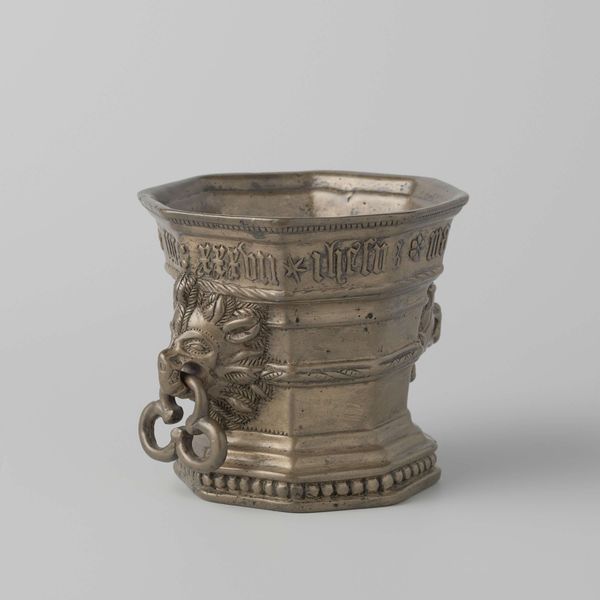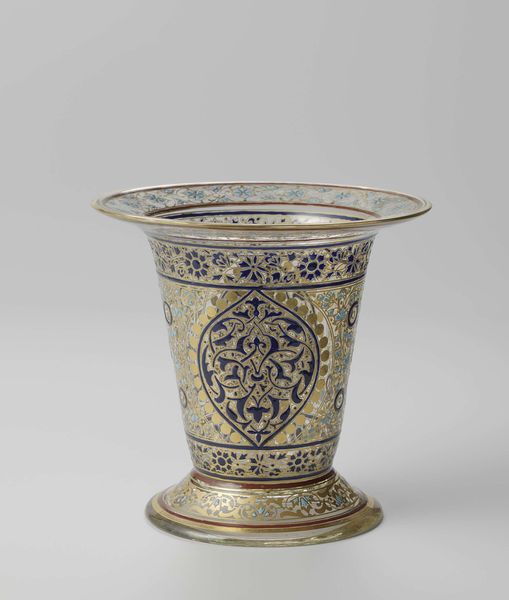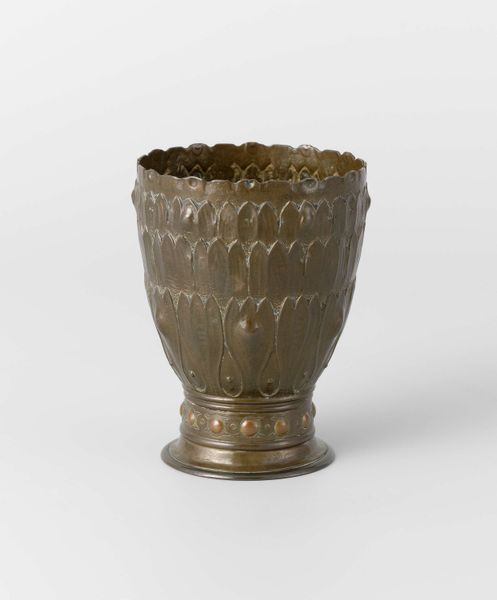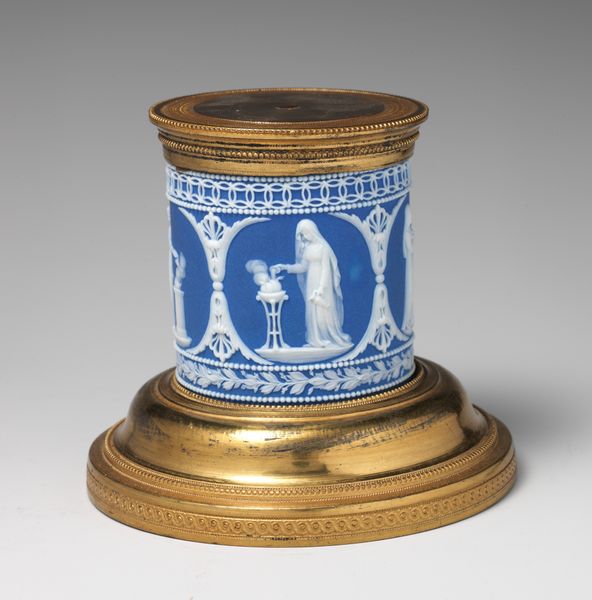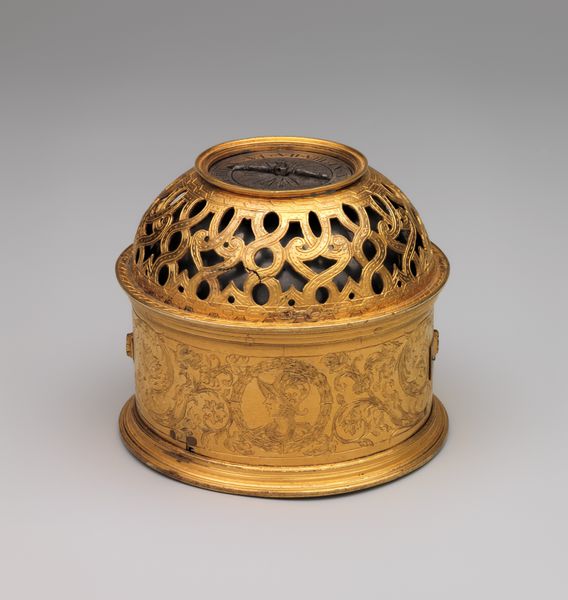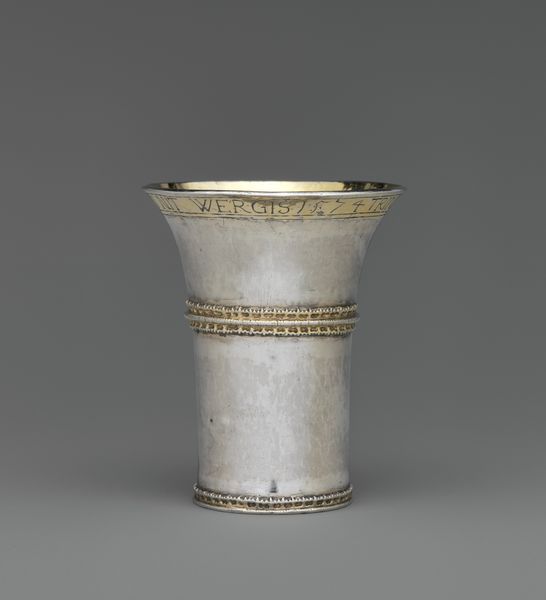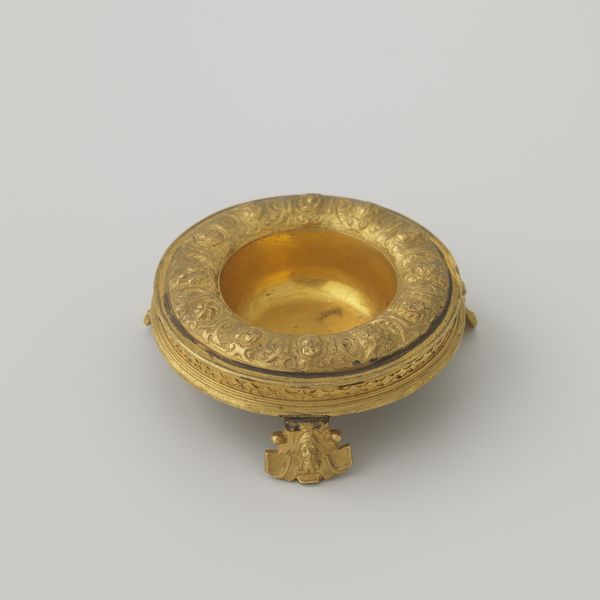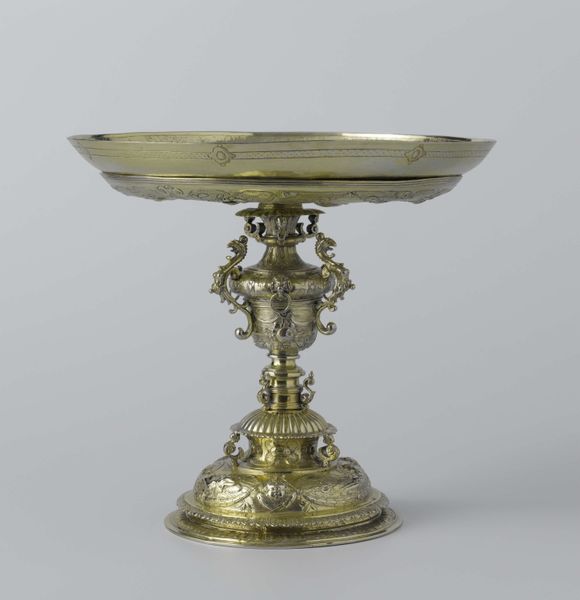
ornament, relief, bronze, sculpture
#
ornament
#
medieval
#
relief
#
bronze
#
11_renaissance
#
sculpture
#
decorative-art
Dimensions: height 11.1 cm, diameter 15.8 cm, weight 3.8 kg
Copyright: Rijks Museum: Open Domain
Editor: Here we have a bronze mortar, or 'Vijzel', made by Peeter van den Ghein in 1542. I’m struck by the contrast between its utilitarian purpose and its highly decorative relief. What do you see in this piece? Curator: I see more than just a functional object; I see a cultural artifact that speaks volumes about its time. Consider the inscriptions – in a period deeply shaped by religious and political upheavals. Who was meant to read those words, and what did it signify to have such a seemingly mundane item adorned in this way? Editor: So, you’re thinking about who had access to literacy and ornate objects like this? Curator: Precisely! Access to language, particularly Latin in this era, was power. The choice of bronze also speaks to issues of class, trade, and networks of craftsmanship. And what of the ornamentation itself? Do the figures present reflect religious beliefs, class relations, or contemporary political symbolism? This artifact, on the surface simple, asks us to reflect on larger social dynamics at play. Editor: It’s fascinating how a simple kitchen tool can reflect so much. I wouldn’t have considered the layers of meaning embedded in its existence. Curator: Exactly! It reminds us that art isn't confined to galleries; it's interwoven with the fabric of everyday life. Editor: I'll never look at old objects the same way. Curator: Nor will I! It's in questioning these objects that they speak to us across the centuries.
Comments
No comments
Be the first to comment and join the conversation on the ultimate creative platform.
